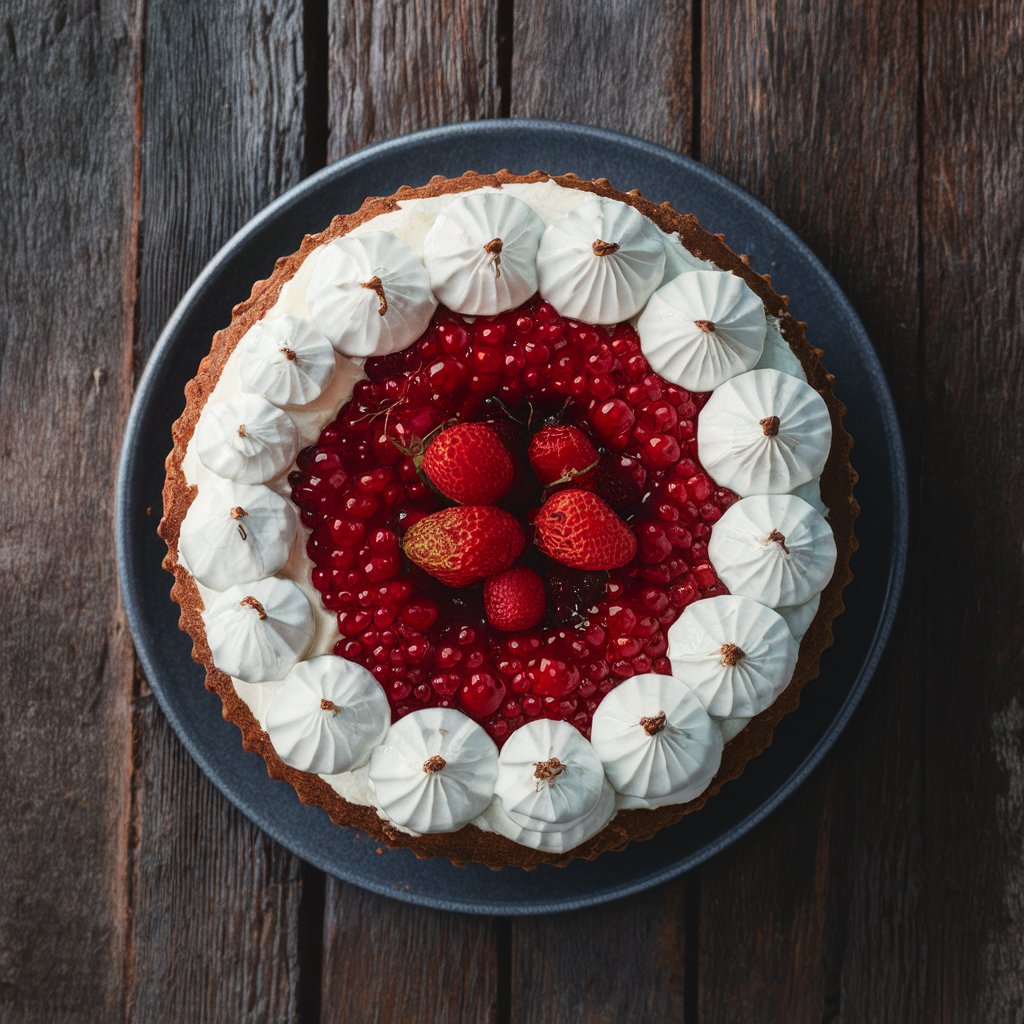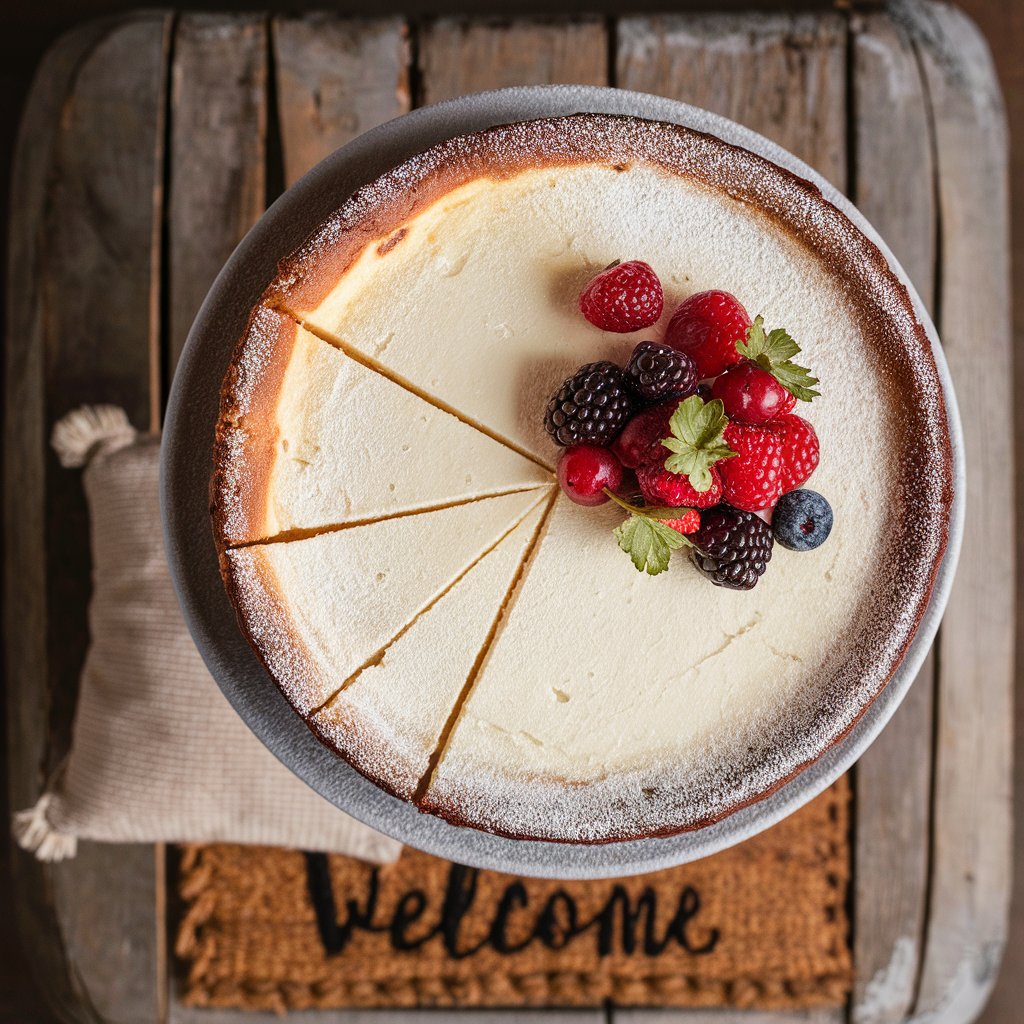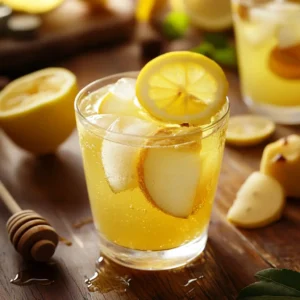- Cottage cheesecake is a delicious and healthier version of the classic dessert. It’s lower in calories and higher in protein, so you can enjoy it without feeling guilty. In this guide, we will walk you through everything you need to know about making this tasty treat, from its history to different ways to prepare it.
Introduction to Cottage Cheesecake: A Healthier Dessert Alternative
This type of cheesecake brings together the creamy texture of traditional cheesecake with the health benefits of cottage cheese. If you’re looking for a lighter dessert, this option still satisfies your sweet tooth while offering a nutritious boost. For those curious about the broader benefits of including cottage cheese in your diet, check out this article from Medical News Today on the health benefits of cottage cheese.

Why Choose Cottage Cheesecake?
- Fewer calories than regular cheesecake
- More protein, making it great for different diets
- A flexible recipe that you can adjust depending on your dietary needs
The Evolution of This Healthier Cheesecake: From Classic to Protein-Packed
Over time, this version of cheesecake has become popular as a healthier alternative to the traditional version. Thanks to the addition of cottage cheese, this dessert offers a unique texture and a mild tangy flavor that helps it stand out.
Not only is this cheesecake delicious, but it’s also good for you. Cottage cheese is full of protein, which is important for building muscles and keeping bones strong. Additionally, it has less fat than other cheeses, making this dessert a smarter choice. For more details on why cottage cheese is good for you, visit the Health Benefits of Cottage Cheese.
Moreover, if you’re on a keto diet or need a low-carb option, this dessert can easily be adapted to fit your needs. By substituting regular ingredients with low-carb options like almond flour, you can enjoy a delicious treat that works with your diet. For more keto-friendly cheesecake recipes, check out Keto Cheesecake Recipes.
Health Benefits of Cottage Cheesecake: Why Cottage Cheese Shines
Choosing a recipe that uses cottage cheese instead of regular cream cheese has many health benefits. For one, this cheese is packed with protein and calcium, both of which are important for your health. Furthermore, it contains fewer calories per slice, making it ideal for those watching their weight. Finally, it’s a perfect fit for low-fat and high-protein diets. If you’re interested in exploring the general benefits of low-fat diets, you might find this guide on the Mayo Clinic’s website helpful.
Essential Ingredients for a Perfect Cheesecake
Here’s what you’ll need to make this dessert:
- Cottage Cheese: The main ingredient for a smooth texture
- Cream Cheese: Adds richness and flavor
- Eggs: Help to hold the cheesecake together
- Sweetener: Use sugar or alternatives like honey or stevia
- Vanilla Extract: For extra flavor
- Crust Ingredients: Usually graham crackers, but you can use gluten-free or keto-friendly options
Step-by-Step Guide to Making Your Cheesecake
Follow these steps, and you’ll have a perfect cheesecake in no time:
- Prepare the Crust: Press your crust ingredients into a springform pan.
- Mix the Filling: Blend cottage cheese, cream cheese, eggs, sweetener, and vanilla extract until smooth.
- Bake: Pour the mixture over the crust and bake until it’s set.
- Cool and Serve: Let the cheesecake cool before you slice it. For a detailed keto-friendly version, visit Keto Cheesecake Recipes.
Creative Variations: Flavors and Crusts
There are many ways to customize this cheesecake. For instance, you can add different flavors, crusts, and toppings:
- Flavor Variations: Add cocoa powder for a chocolate twist, or mix in fresh fruit like strawberries or blueberries. Additionally, you might enjoy pairing this dessert with something like Earl Grey Cookies for a unique flavor combination.
- Crust Alternatives: Try almond flour or a gluten-free crust for different dietary needs. Similarly, seasonal variations can be inspired by other baked goods, such as the Pumpkin Banana Loaf, which adds a warm, spicy flavor to your cheesecake.
- Toppings: Drizzle with honey, or top with nuts or fruit compote for added flavor.
Serving Suggestions for Your Cheesecake
This cheesecake can be served in many ways. For example, you can:
- Pair it with a hot cup of coffee or tea.
- Garnish it with fresh berries or a sprinkle of powdered sugar.
- Serve with a dollop of whipped cream for extra indulgence. Consider including it on a dessert table with other treats like Muddy Buddies for a variety of sweet options.
How to Store Your Cheesecake Properly
To keep your dessert fresh:
- Refrigeration: Store it in an airtight container in the fridge for up to a week.
- Freezing: Wrap slices individually and freeze them for up to two months.
Avoiding Common Baking Mistakes
Here are some common mistakes to avoid when making this dessert. First of all, avoid overbaking, as it can cause cracks and dry out the cheesecake. Additionally, make sure to follow the recipe closely, as using the wrong ingredient amounts can lead to issues. Finally, always store your cheesecake the right way to keep it fresh.
Cottage Cheesecake for Special Diets: Keto, Gluten-Free, and Vegan Options
Low-Carb and Keto Diets
For those following a low-carb or keto diet:
- Instead of regular sugar, use keto-friendly sweeteners like erythritol.
- Also, try using a nut-based crust instead of graham crackers.
Gluten-Free Cottage Cheesecake
Making a gluten-free version is simple:
- Use a gluten-free graham cracker or almond flour crust.
- Additionally, ensure all ingredients, like vanilla extract, are gluten-free. For more tips on gluten-free baking, visit Gluten-Free Baking Tips.
Vegan Alternatives to This Dessert
If you’re vegan:
- Use plant-based options like tofu or cashew cream instead of cottage cheese.
- Replace eggs with flax eggs or another egg substitute.
Frequently Asked Questions About This Cheesecake
Can I Substitute Cottage Cheese with Another Cheese?
Yes, you can use ricotta cheese, but it will change the texture and flavor a bit.
How Can I Make My Cheesecake Creamier?
Make sure the cottage cheese is well-blended and consider adding more cream cheese for a richer texture.
Is This Dessert Suitable for Children?
Absolutely! It’s a healthier dessert option that kids will love.
How Long Does This Dessert Last in the Fridge?
When stored properly, it can last up to a week in the fridge.
Can I Make This Cheesecake Without a Crust?
Yes, you can skip the crust for a lower-carb version.
Conclusion: Why This Cheesecake Is the Perfect Guilt-Free Dessert
This cheesecake is a delicious and healthier alternative to traditional cheesecake. Because it’s so versatile, it can be adjusted to suit various diets, making it a great choice for anyone looking for a tasty, guilt-free dessert.

Replace with Synonyms: Swap out some instances of “Cottage Cheesecake” with synonyms like “cottage cheese cheesecake,” “healthy cheesecake,” or “protein-packed dessert.”
- Rephrase Sentences: Modify some sentences to convey the same meaning without using the keyphrase directly.
Here’s an example of how you could rephrase:
- Original: “Cottage cheesecake is a delightful and healthier twist on the classic cheesecake.”
- Revised: “This dessert is a delightful and healthier twist on the classic cheesecake.”
Revised Subheadings with Keyphrases and Synonyms:
- Introduction to Cottage Cheesecake: A Healthier Dessert Alternative
- The Evolution of Cottage Cheesecake: From Classic to Protein-Packed
- Health Benefits of Cottage Cheesecake: Why Cottage Cheese Shines
- Essential Ingredients for a Perfect Cottage Cheesecake
- Step-by-Step Guide to Making Cottage Cheesecake
- Creative Variations of Cottage Cheesecake: Flavors and Crusts
- Serving Suggestions for Cottage Cheesecake
- How to Store Cottage Cheesecake Properly
- Common Mistakes to Avoid When Baking Cottage Cheesecake
- Cottage Cheesecake for Special Diets: Keto, Gluten-Free, and Vegan Options
- Frequently Asked Questions About Cottage Cheesecake
- Conclusion: Why Cottage Cheesecake Is the Perfect Guilt-Free Dessert




